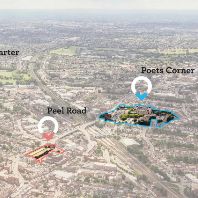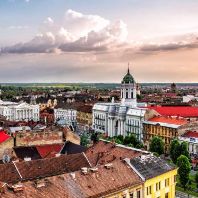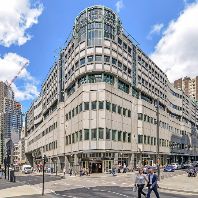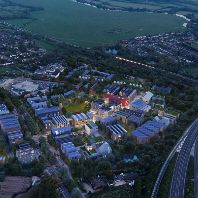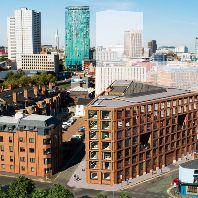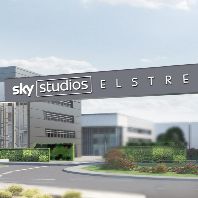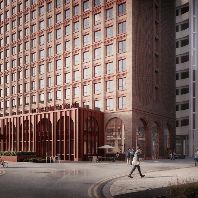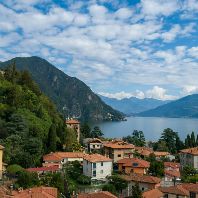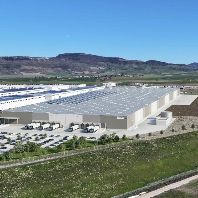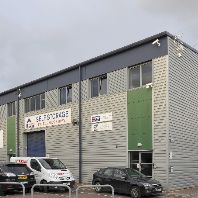The project, commissioned by Dutch developer Provast, will be used mainly by the legal and tax service provider Loyens & Loeff for which Delft-based interior architects Fokkema & Partners designed the interior spaces. KCAP Architects&Planners realized the city's new 23,000-m² office building Blaak 31, which is situated alongside Rotterdam's future Market Hall, designed by MVDRV and also developed by Provast.
Paulien_Borst_rgb755x650.jpg)
Blaak 31, a 12-story office building from KCAP shows a striking form, distinctive and recognizable with rotated volumes.
A large number of new projects in Rotterdam's Laurenskwartier and the Waterstad contribute to the current revival of the historic city of Rotterdam. A new series of buildings for living and working is added to the reconstruction architecture of the 1950's to make the centre lively and attractive again.
"The location of Blaak 31 on one of Rotterdam's inner city boulevards and at the corner next the Blaak metro and train station is a striking and historically significant position in the city centre where it lacked urban intimacy. The design therefore provides a lively street profile with public functions. At the same time it gives a spatial limit to the area," says Han van den Born, partner of KCAP.
On this important site the 12-story building shows a striking form, distinctive and recognizable. The volumes are slightly rotated relative to each other and shift 2.70 meters every three floors. This form is partly determined by the distance to the Market Hall with the aim of allowing maximum light and privacy for both buildings. In addition, the underground metro line affects the massing of the building.
The interior has an open structure with large flexible office floors combined with atriums and waterfall stairs to enable communication, interaction and encourage an informal working atmosphere. On the ground and first floor one finds the more public type of office functions. A modern and transparent library and auditorium adjacent to the street are connected by a monumentally elegantly curved staircase to the restaurant and meeting center on the first floor.
The predominately natural materials are used in a contemporary way of design. The materialisation supports a personal, quiet and transparent working environment on the office floors. Three different types of stairs of which one is inspired on M.C. Esscher's work connect the floors in the most optimal way.
The facade, with its horizontal lines of glass and natural stone, emphasises the shape of the building and allows good daylighting inside the offices and generous views to the street activities outside. "This openness is also perceived from the outside. Not only is the spectacular steel structure visible from the outside, but also the life and work within the building," continues Han van den Born.
The building has been realized within the maximum available construction time of 21 months. With the use of sustainable materials and techniques the building reaches a GreenCalc+ score of over 200 points.
Source: KCAP Arch
"The location of Blaak 31 on one of Rotterdam's inner city boulevards and at the corner next the Blaak metro and train station is a striking and historically significant position in the city centre where it lacked urban intimacy. The design therefore provides a lively street profile with public functions. At the same time it gives a spatial limit to the area," says Han van den Born, partner of KCAP.
On this important site the 12-story building shows a striking form, distinctive and recognizable. The volumes are slightly rotated relative to each other and shift 2.70 meters every three floors. This form is partly determined by the distance to the Market Hall with the aim of allowing maximum light and privacy for both buildings. In addition, the underground metro line affects the massing of the building.
The interior has an open structure with large flexible office floors combined with atriums and waterfall stairs to enable communication, interaction and encourage an informal working atmosphere. On the ground and first floor one finds the more public type of office functions. A modern and transparent library and auditorium adjacent to the street are connected by a monumentally elegantly curved staircase to the restaurant and meeting center on the first floor.
The predominately natural materials are used in a contemporary way of design. The materialisation supports a personal, quiet and transparent working environment on the office floors. Three different types of stairs of which one is inspired on M.C. Esscher's work connect the floors in the most optimal way.
The facade, with its horizontal lines of glass and natural stone, emphasises the shape of the building and allows good daylighting inside the offices and generous views to the street activities outside. "This openness is also perceived from the outside. Not only is the spectacular steel structure visible from the outside, but also the life and work within the building," continues Han van den Born.
The building has been realized within the maximum available construction time of 21 months. With the use of sustainable materials and techniques the building reaches a GreenCalc+ score of over 200 points.
Source: KCAP Arch

